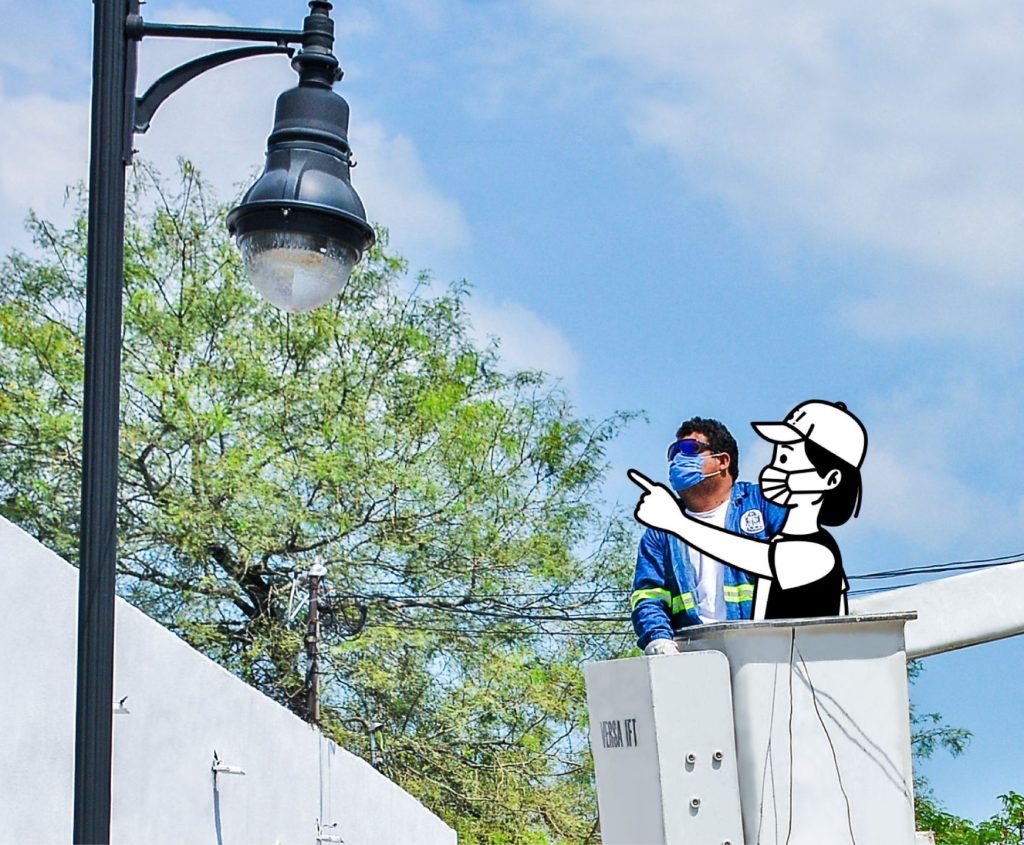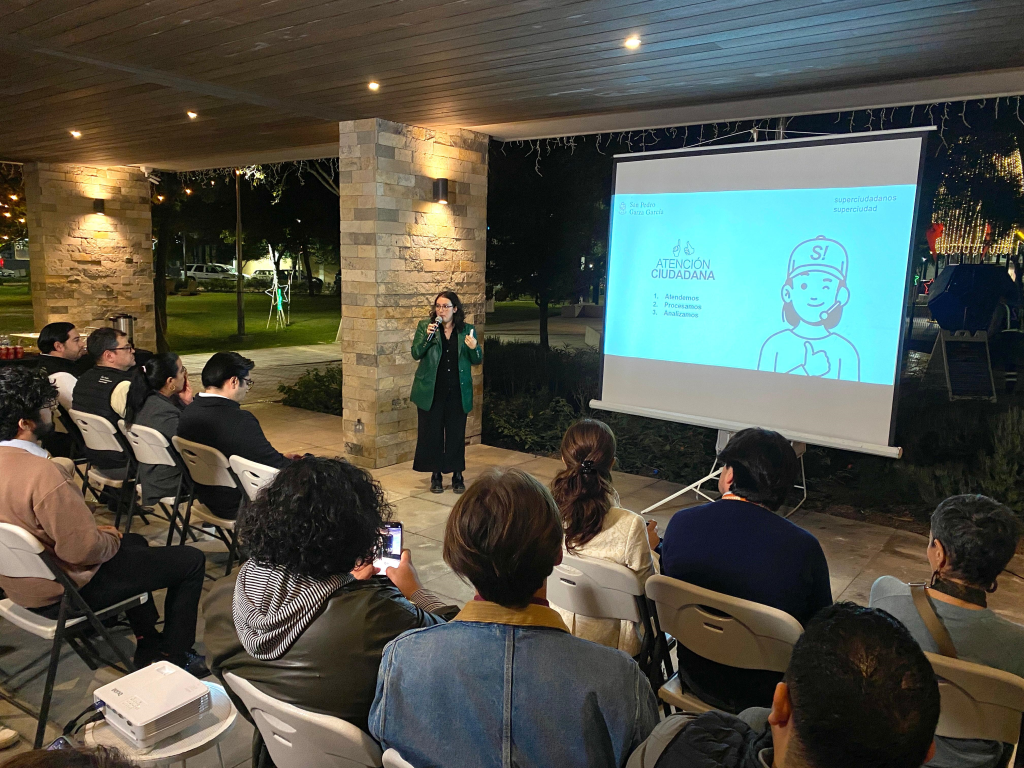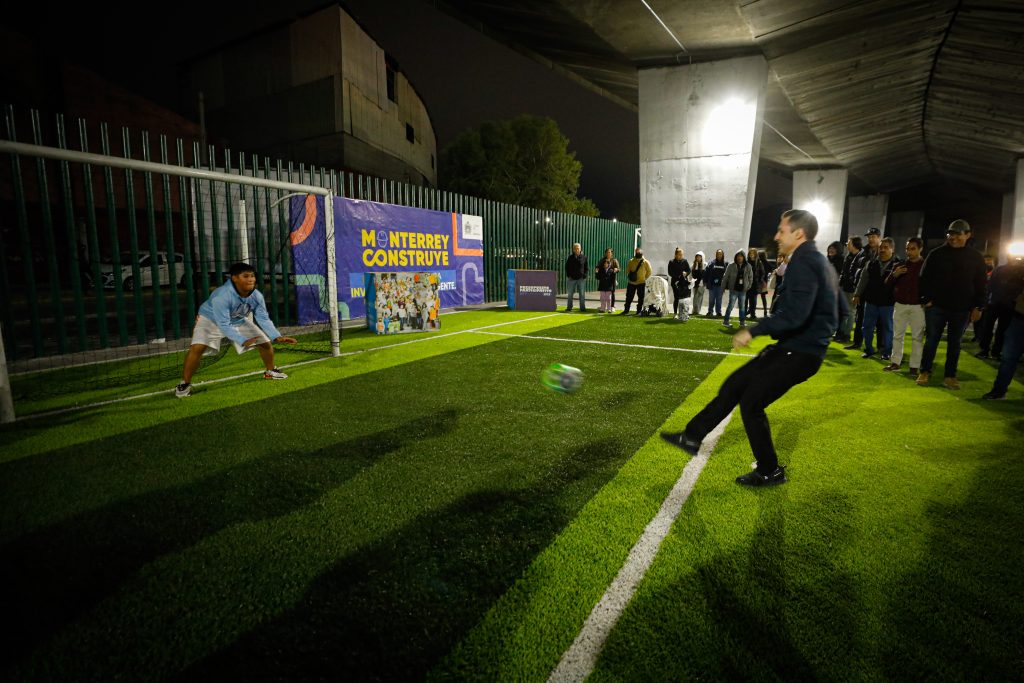San Pedro Garza García, Mexico
Data Makes A Resident Service Platform Go From Good to Great
Project Type:
Health and Wellbeing, High-Performing Government, Youth Development

At a Glance
Evaluated the City’s resident services chatbot, found room for improvement and made changes that reduced response times by 50% and saved $8.5 million MXN.
Visited 9,000 homes in 18 priority neighborhoods to interview caregivers about what services they needed. Services included transportation, grocery assistance and weekly breaks from caregiving. On average, caregivers in the resulting program reported a 30-point improvement in well-being after five weeks.
In response to feedback from caregivers, the City created—and then expanded—a mini public transportation route with 14 stops.
Reduced park maintenance costs by centralizing park management with a public-private partnership.
In February 2020, San Pedro Garza García launched a WhatsApp-based, resident service chatbot called Sam Petrino, or “Sam” for short. Previously the City received service requests – about potholes, broken street lights, overflowing garbage bins and more – by phone, through its website or in person at City Hall. But the Office of Innovation and Citizen Participation believed more residents would engage if they could use WhatsApp, the most common communication platform in Mexico.
They were right. Within two weeks of its launch, Sam was receiving more reports than any of the other reporting methods. Then the COVID-19 pandemic hit, and Sam’s purpose evolved. The City expanded Sam to include options for requesting food assistance or other support, reporting domestic violence, making donations or volunteering, and, eventually, registering for vaccines. By the end of 2020, Sam was averaging over 1,000 reports each month and gaining international acclaim, including receiving the National Institute of Transparency’s Innovation Award.
The City could have called Sam a success and shifted into autodrive. But, in 2021, data showed that Sam was not working as well as it could. The flood of new reports was creating internal problems, response times were slow, resident satisfaction was dropping, and the data being gathered through the chatbot was stuck in silos. The City interviewed staff, reviewed processes and made changes.
The entire government is, so to speak, connected to the bot.


The City made 15 improvements to the Sam Petrino chatbot.
The City re-engineered Sam, making more than 15 improvements. Now, Sam is fully automated and digitized, internal reporting operations have been streamlined, and the public has clear accountability channels. Data from Sam is reliably gathered, shared across departments and publicly, and used in decision making.
The result: Despite 110% more citizen service reports submitted in 2023 than in 2019, the City responded 8.6 times faster – sometimes within hours – with the same amount of staff and the same amount of funding. Citizen satisfaction with Sam and the City’s response to service requests has increased from 67% before the changes to 84% after the changes were implemented. The majority of City staff also approve of the new internal processes behind Sam, which have helped foster accountability and recognition for those responding to the reports.
The City’s willingness to listen to the data, its residents and staff allowed it to see that even award-winning innovations can be improved. It’s a successful approach San Pedro Garza García is now broadly applying to better serve its residents.
What I would tell all other mayors is, ‘If your resources are scarce – which they are – you have to understand what you are achieving with these resources. And the only way to do that is to measure what you are doing.’


